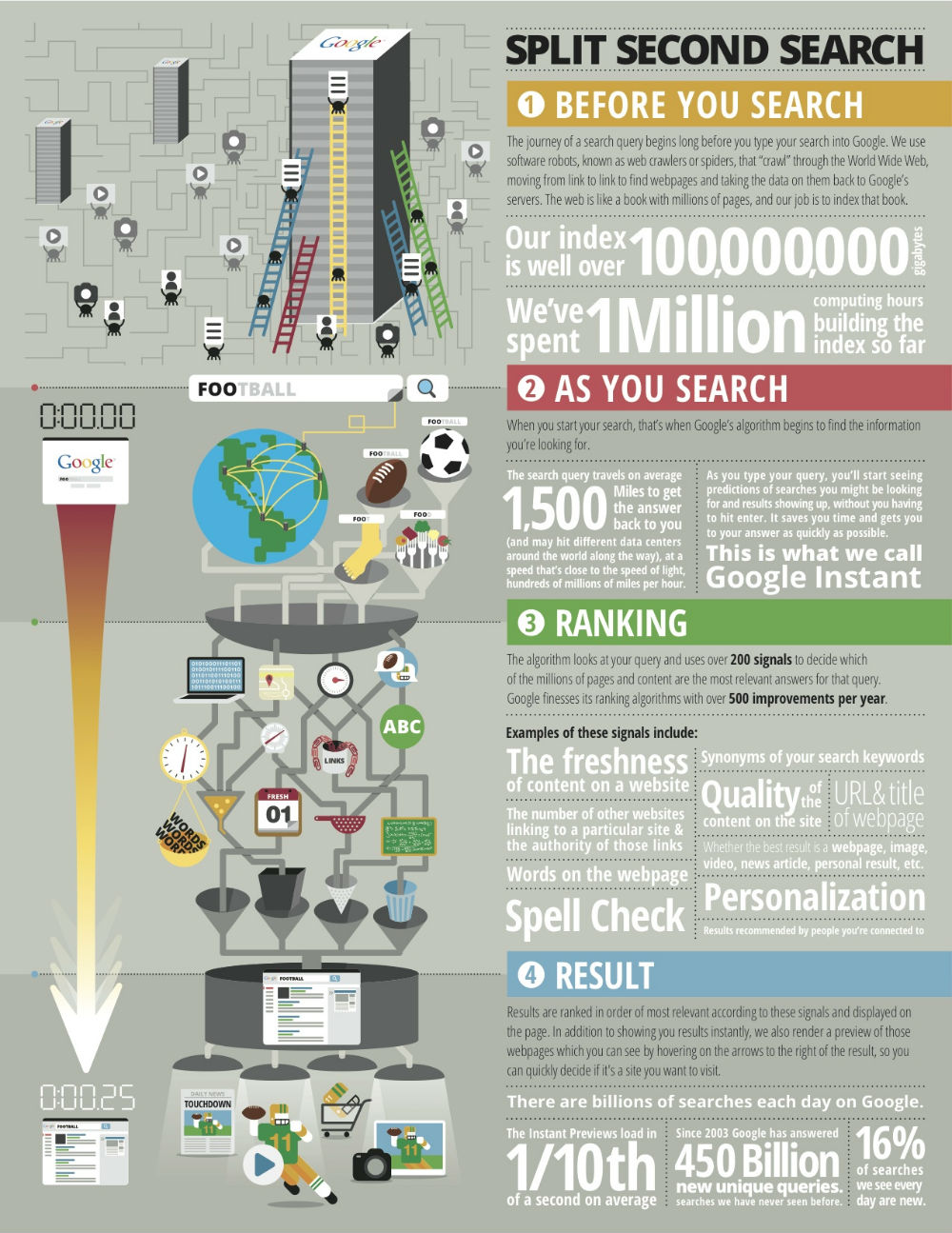Google has put together an infographic that shows the journey of a search on the site, from how a query travels 1,500 miles at nearly the speed of light to hit different data centers around the world to how it ranks its results.
The search engine giant has spent one million computing hours building the index, which consists of over 100 million gigabytes. When you conduct a search, Google’s algorithms kick in and the query travels hundreds of millions of miles per hour to hit different data centers and retrieve relevant results.
“We find the fastest path to the data center near you because we don’t want to be slowed down by even the speed of light,” a Google spokesperson said. “1,500 miles is an average number, and it may be much less for you at certain times, depending on the traffic of the web, data center proximity and the features that are triggered.”
The algorithm also uses more than 200 signals — including freshness of content, URL and title of a webpage, words on a webpage and quality of content on a site — to decide which pages are most relevant.
Not only do Google users search for billions of keywords each day, the search engine has answered 450 billion new unique queries it had never seen before. In fact, about 16% of daily Google searches are new.
For more information on how a Google search works, check out the infographic below.
(Please click on the image to open in full resolution)
You can also have a look at a video where Matt Cutts, software engineer head of Google’s webspam team, tell in detail how Google manages to search the entire web in less than half a second. Have a look:
How Google Searches the Entire Web in Less Than Half a Second













